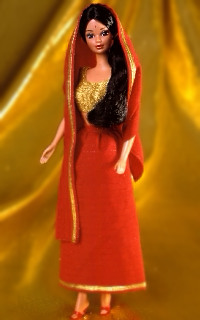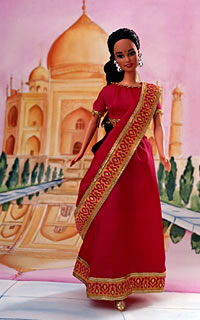Considering my previous posts about Kiri Davis and the beauty standard, Mattel’s Dolls of the World, the Cheetah Girls, and the Bratz dolls, I’d like to point out a trend in tween consumerism: multiculturalism. (See also this post involving a Hilary Duff music video)

What is multiculturalism? Wikipedia provides a comprehensive summary of its history, but it’s basically the idea that modern societies should “embrace and include distinct cultural groups with equal cultural and political status.” Basically, it’s the ‘melting pot’ (or more recently, ‘mosaic’ or ‘salad bowl’) ideal of American society that I know I grew up learning about in school. The multicultural idea posits that a society should not only ‘tolerate’ different cultures, but that people can in fact benefit from diversity, as we saw in the examples of “Cheetah Sisters” and Bratz the Movie.
The multicultural phenomenon in popular culture really took off in the mid-1990s in the U.S., which makes sense demographically, given the rising numbers of immigrants, especially from Latin America and Asia–remember when Madonna wore a bindi? And remember the macarena? Well, a decade later, we have ample evidence that marketers have kept multiculturalism in mind while creating products for tweens to consume:
- May I point out the more obvious examples from the 90’s, Pocahontas and Mulan? And Princess Jasmin, Aladdin’s one true love?
- More recently, Disney announced plans to create its first black princess, Maddy, featured in the upcoming movie The Frog Princess. Set in New Orleans during the Jazz Age, the film will be Disney’s first hand-drawn one since 2004. Reappropriate and Racialicious both express hope and some apprehension about this. On one hand, why didn’t this happen sooner? And will this end up being stereotypical (Racialicious mentions the possibility of “jive-talking frogs and voodoo priests”)? But on the other hand, isn’t putting a black lead character that girls from all backgrounds will presumably relate to (since Disney will no doubt market it as best as it can) a step in the right direction?
- Also recently, Nickelodeon has announced plans to create an animated series called “Ni Hao, Kai-lan,” in which viewers will follow young Chinese-American Kai-lan around as she interacts with the world and with her multigenerational household. According to this article that describes the process that found the voice of Kai-lan (to be played by Canadian 10-year-old Jade-Lianna Peters), the show will be “about what it’s like to be bicultural in America.” And much like Dora the Explorer teaches kids basic Spanish, Kai-lan will teach kids Mandarin Chinese.
 So through these examples (which are just a limited sample of a much bigger field), I can see two beneficial effects of consumerism. For one, it seems like the use of ‘multicultural’ characters, no matter how big a role they play (though ideally, different characters could play the lead no matter what their background was), can positively influence the development of young nonwhite girls. It seems pretty simple: seeing yourself represented on screen (or as a doll, or in a magazine) tells you that you exist, and that people like you matter. This applies not only to race, but also to different body types and personal styles. By incorporating this ‘diversity’ into media in a nonstereotypical manner (e.g. without Kai-lan and her family being portrayed as the ‘yellow peril’ about the take over America, or without fat women in the media always being portrayed as crazed for sex), society can come closer to making everyone feel welcome and appreciated.
So through these examples (which are just a limited sample of a much bigger field), I can see two beneficial effects of consumerism. For one, it seems like the use of ‘multicultural’ characters, no matter how big a role they play (though ideally, different characters could play the lead no matter what their background was), can positively influence the development of young nonwhite girls. It seems pretty simple: seeing yourself represented on screen (or as a doll, or in a magazine) tells you that you exist, and that people like you matter. This applies not only to race, but also to different body types and personal styles. By incorporating this ‘diversity’ into media in a nonstereotypical manner (e.g. without Kai-lan and her family being portrayed as the ‘yellow peril’ about the take over America, or without fat women in the media always being portrayed as crazed for sex), society can come closer to making everyone feel welcome and appreciated.
But critics will ask, ‘Why does it matter if there’s a cartoon character of such-and-such race? Doesn’t that just promote the idea that people should only relate to people who look like them? Why can’t they relate to the characters we have already?’ First of all, Continue reading



